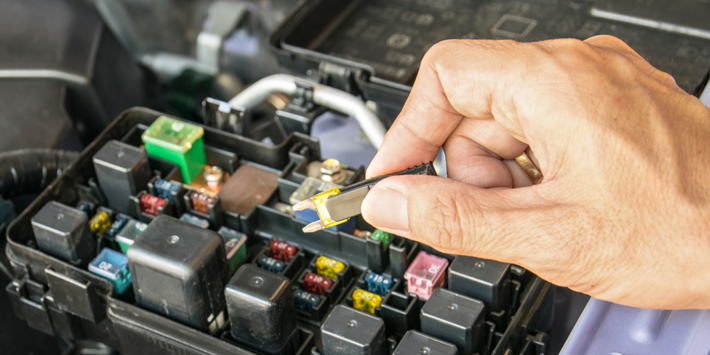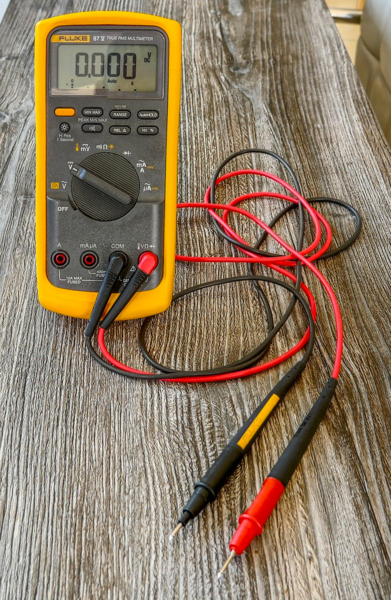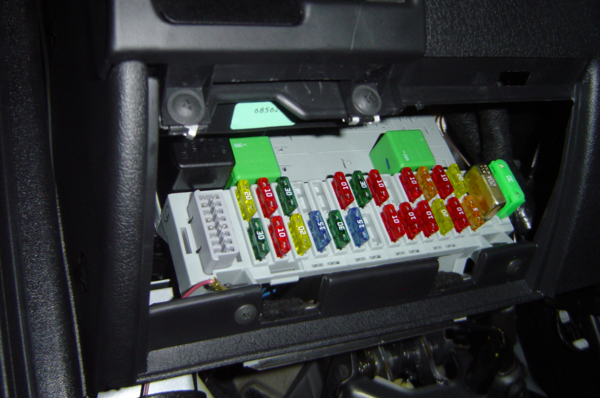All cars on the road are equipped with on-board electronic systems with multiple options for driving, safety and comfort aids. The fuse box is designed to protect the electrical circuits in the event of overheating. But how do you change a fuse in your car? And where is the fuse box located? A rezulteo tutorial.

What is the purpose of a fuse in a car?
A fuse has a protection function against short circuits. It stops the flow of electrical current that has become excessive due to an overvoltage in car equipment. Its conductive alloy blade which connects the two fuse terminals heats then breaks to block the overcurrent in the electric circuit.
A fuse blows without warning! But no worries, it is cheap and easy to replace a faulty fuse yourself.
Why does a blown fuse cause an electrical malfunction?
You have noticed that an indicator, a wiper, a dip light, the de-icing or the radio, etc. is no longer working. The instrument panel indicates an electrical fault. An equipment item has probably overheated, and a breakdown occurs!
Due to a failure of the car system, the fuse blows or melts depending on the model, to protect the circuit and prevent a catastrophe. This is why it is essential to replace a blown fuse with a new fuse.
To find the location of the fuse box and exactly where the fuse you are looking for is located, please refer to your vehicle’s service manual. It may be in the passenger compartment under the dashboard or in the engine compartment. Once the fuse box is open, inside it, you will find a diagram which indicates the number of amps per group of fuses.
Also, over time and wear, fuses in the engine compartment can oxidise due to the humidity. This can also interrupt the flow of current and result in an electrical power failure in the vehicle.
How to know if a car fuse has blown without a multimeter?
A faulty fuse is easy to detect at a glance since its transparent insulated housing, or the conductive blade will have turned black, or the metal filament on the inside will have broken to interrupt the current.
However, depending on the vehicle, the location of fuses may not necessarily allow the state of the conductive blades to be seen easily. In this case, a multimeter can be used.
How do you use a multimeter?
It is easy to use: set the multimeter to the ohmmeter position (Ω). With the leads connected, test the voltage of the fuse. If the multimeter indicates 1; the fuse is blown, if it indicates zero (or a value close to zero), then the current can flow! It is therefore in good condition.

How do you identify the type of fuse?
You can find information concerning the type of fuse to replace in your vehicle’s service manual.
i.e.: each fuse corresponds to a size depending on its rating: 3.5A, 5A, 7.5A, 10A, 15A, etc. Furthermore, each fuse has a unique colour code in accordance with the standard DIN 72581.

How to change a blown fuse in your car?
- Refer to your service manual to identify the location of the fuse box. In most vehicles, it is either under the bonnet or the dashboard.
- Disconnect a terminal from the battery to prevent an electrical shock when handling the fuses!
- Use a pair of long nose pliers to move it easily without damaging the other fuses.
- Turn it so that you can see the face with the metal wire (or conductive blade).
- Use the pliers to remove the blown fuse.
- Replace it with a new fuse with the same rating (and the same colour) between the spring terminals.
- Tighten the terminals without forcing and without bending them.
Warning: make sure that a faulty fuse is replaced with a new fuse of the same colour and rating, otherwise your car’s electrical system runs the risk of a short circuit or even a fire.
You want to read more tutorials? Change your oil at home: it’s easy and cheap




